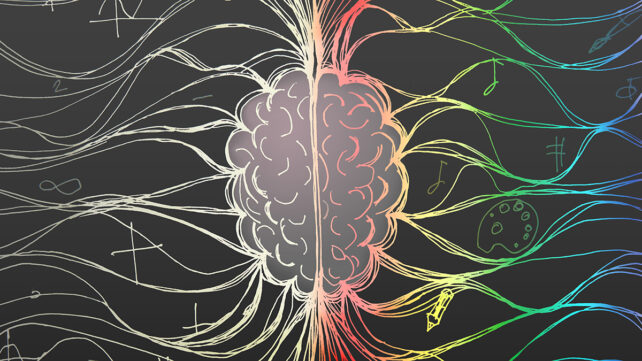Our bodies are in a constant state of ebb and flow, from the breaths we're taking to the fluids washing our brains clean each night. Scientists have now discovered that key rhythms in our brains and in our guts actually share some of the same underlying physics.
The same oscillation patterns that help to digest food also appear to be at work in the brain's blood vessels, helping to deliver oxygen and nutrients when needed. The findings could significantly improve our understanding of both biological systems.
This discovery is the work of an international team of researchers, and was prompted by wanting to better understand how blood vessels in the brain control rhythmic changes in blood flow, known as cortical vasomotion.
Related: Fragments of Bacteria in Our Gut May Lull Our Brains to Sleep at Night
Before tackling what may be the most complex thing in the Universe, the researchers started with a simpler oscillation system: gut peristalsis, which pushes food through the digestive system. Building on previous studies, the team produced a more complete mathematical model of the rhythms and waves involved, known as a Ginzburg-Landau (GL) model.

The researchers tested whether their updated model could reproduce the same oscillation patterns they saw in experiments in cat intestines, and sure enough it could.
The new mathematical approach shows how nearby groups of oscillations can sync up or 'couple' with each other, if the original differences aren't too great. There are certain thresholds where that happens, and certain thresholds where it doesn't happen.
That not only helps to explain flow patterns in the digestive system, but intriguingly the physics seem to match up with those of the brain's neurons.

"Coupled oscillators talk to each other and each section of the intestine is an oscillator that talks to the other sections near it," says physicist Massimo Vergassola, from UC San Diego.
"Normally, coupled oscillators are studied in a homogeneous setting, meaning all the oscillators are at more or less similar frequencies. In our case, the oscillators were more varied, just as in the intestine and the brain."
Of course, there are still major differences between the gut and the brain. For instance, the gut is a one-way path for food, but blood can travel in many different directions through the network of vessels in the brain.
While these findings talk about similar behavior rather than a direct connection, they could help scientists better understand pulsations in the brain and gut that can signal changes in mental health or even foreshadow dementia.
"The brain is infinitely more complicated than the gut, but this is science at its best," says Kleinfeld. "You ask one question, it leads you somewhere else, you solve that problem, then return to your original question."
The research has been published in Physical Review Letters.

